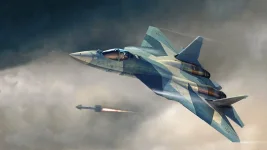- Views: 3K
- Replies: 22
Pakistan is reportedly planning a significant expansion of its attack helicopter fleet by acquiring more Z-10ME helicopters from China, a move seen as a direct response to India's substantial procurement of its domestically produced Light Combat Helicopter (LCH) Prachand.
In a notable development, Pakistan is also exploring options for assembling the Chinese helicopters locally and potentially equipping them with advanced Turkish weapon systems to enhance their combat effectiveness.
India's LCH Prachand, which translates to "Fierce," is a multi-role attack helicopter developed by the state-owned Hindustan Aeronautics Limited (HAL). It is specifically designed to operate effectively in the high-altitude environments characterising India's borders.
In June 2024, India's Ministry of Defence initiated the process to acquire 156 Prachand units – 90 for the Indian Army and 66 for the Indian Air Force. This major defence deal, valued at Rs 62,000 Cr (approximately US$6.1 billion), was approved by India's CCS on 28 March 2025.
The Prachand's capability to operate above 5,000 meters and carry a mix of air-to-air and air-to-ground missiles makes it a potent asset, especially in challenging terrains like Ladakh and the Siachen Glacier.
Faced with this enhancement in India's aerial firepower, Pakistan is strengthening its military ties with China to potentially increase its fleet of Z-10ME attack helicopters.
The Z-10ME is an export-oriented version of the Chinese Z-10, featuring upgrades such as a more powerful engine (WZ-9G), measures to reduce its heat signature, and improved defensive systems.
Initial deliveries of the Z-10ME to Pakistan are reportedly expected within 2025. This decision follows previous setbacks in Pakistan's attempts to acquire attack helicopters from other sources, including the American AH-1Z Viper and Turkey's T129 ATAK, which were hindered by export restrictions and geopolitical factors.
Beyond simply purchasing the helicopters, Pakistan is reportedly discussing the possibility of establishing a domestic assembly line for the Z-10ME with China.
Such an arrangement would represent a major step towards greater self-sufficiency in Pakistan's defence industry, potentially reducing reliance on foreign suppliers and cultivating local technical skills. Local assembly could also facilitate tailoring the helicopters to meet the specific operational requirements of the Pakistan Army, particularly along the Line of Control (LoC) and for counter-insurgency operations.
Furthermore, Pakistan is considering a potential three-way collaboration involving Turkey to integrate sophisticated Turkish weaponry onto the Z-10ME platform.
Despite the earlier cancellation of a deal for Pakistan to buy Turkish T129 helicopters (due to the US withholding export licenses for its engines), Turkey possesses significant expertise in helicopter subsystems, avionics, and munitions.
Integrating Turkish systems, such as UMTAS anti-tank missiles, Cirit laser-guided rockets, or advanced avionics, could substantially increase the Z-10ME's combat power and survivability.
This strategic direction highlights Pakistan's strengthening defence relationships with China and Turkey, providing alternatives to Western military hardware often subject to procurement challenges.
While perhaps not as extensively combat-proven as helicopters like the US Apache, the Z-10ME offers a capable platform with a reported combat range of 800 km and a weapon payload capacity of about 1,500 kg.
Equipping it with Turkish technology could enhance its ability to counter platforms like the Prachand, which boasts a 700 km range and exceptional high-altitude performance demonstrated by landings at nearly 15,800 feet.
For Pakistan, acquiring and potentially building the Z-10ME serves to maintain a credible military deterrent. India's planned induction of 156 Prachand helicopters will significantly augment its forces along its western and northern borders.
By increasing its Z-10ME inventory, potentially to over 30 units according to some reports (though official numbers are unconfirmed), Pakistan aims to counterbalance this development.
Success in local assembly and system integration could also open avenues for Pakistan to market customized Z-10MEs internationally in the future, mirroring India's own aspirations to export the Prachand helicopter.


